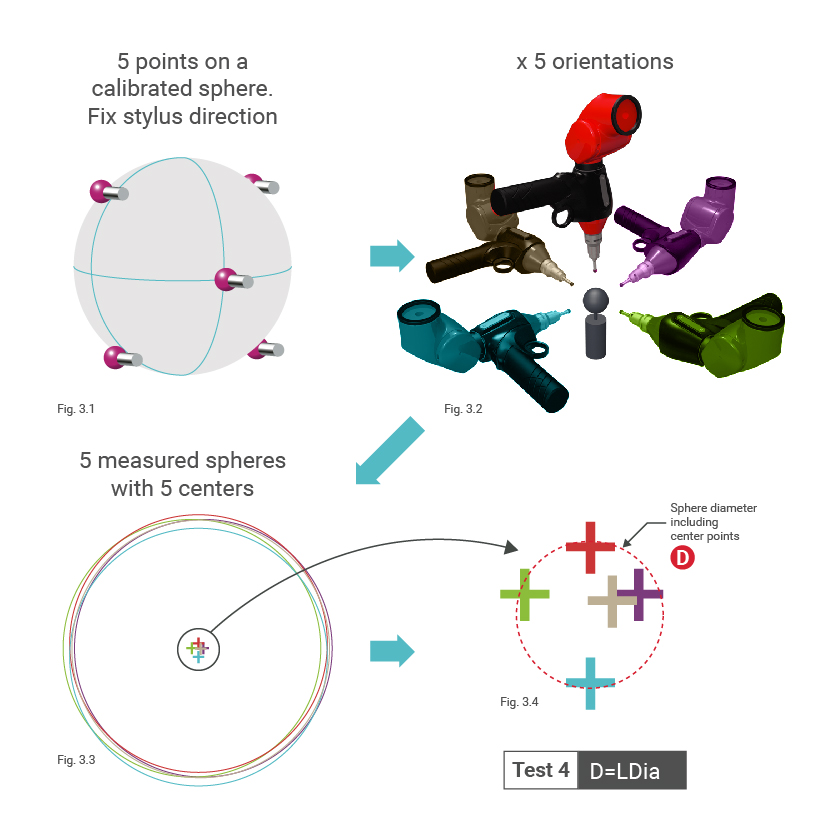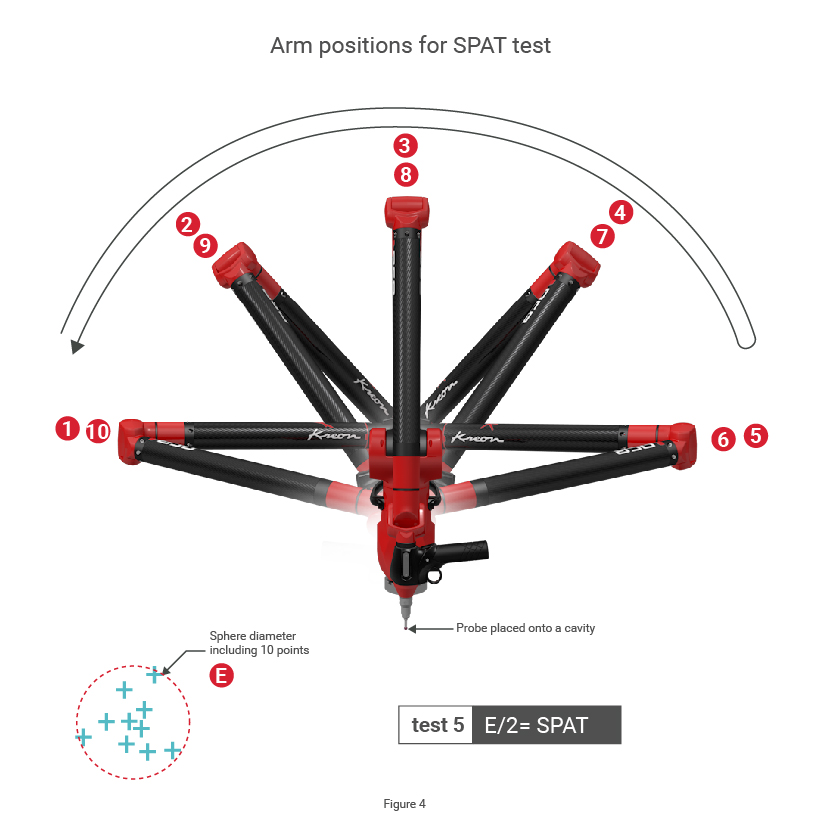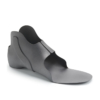NEWS STORY
From February 2020 onwards, Kreon Measuring Arms will be ISO 10360-12 certified. This international certification requires common tests to be performed by all suppliers within the sector to ensure greater transparency of product specifications for buyers.
The standard applies to measuring arms fitted with a probe, whereas tests for arms with a 3D scanner are based on the 10360-8 standard. The 10360-12 tests result in new designations for the technical documentation of measuring arms, such as LDia, PForm, PSize and EUni (as described in detail below). 6- and 7-axis measuring arms are specified using the same tests.
Kreon Measuring Arms ISO 10360-12
Test 1, two results:
Size error on a sphere, tactile
PSize (PSize.Sph.1×25::Tact.AArm)
The PSize value expresses the error when measuring the size of a geometry, specifically the diameter of a sphere. It is calculated as the difference between the diameter of a least squares sphere, deduced from 25 points measured, and the calibrated diameter of the sphere (Figure 1.3).
Form error on a sphere, tactile
PForm (PForm.Sph.1×25::Tact.AArm)
This test, based on the preceding one, establishes the distribution of contact (tactile) measurements over a sphere. 25 points are probed on a calibrated sphere, and a least squares sphere is derived from these 25 points. The test result is the thickness of a shell encompassing the 25 points, the center of which is the least squares sphere (Figure 1.4). This process has to be repeated for two positions of the sphere within the volume of the measuring arm. The worse of the two results is used.
Test 2: Articulated location error, tactile
LDia(LDia .5×5 :Art :Tact.AArm)
This test determines the errors caused by the articulations of the arm, primarily axes 5, 6 and 7 of the joint. 5 points are probed on the sphere with the probe pointing in the same direction (Figure 3.1), and this process is repeated in 5 different orientations (Figure 3.2). The center of optimum adjustment of the sphere is calculated for each set of 5 points. The diameter of the smallest sphere encompassing the five centers calculated is the result of the test. The process has to be repeated for two positions of the sphere within the volume of the measuring arm.
Test 3: Length measurement error, unidirectonal, tactile
EUni (EUni :0 :Tact.AArm)
The EUni test establishes the unidirectional length error between two probed points. It is based on 105 length measurements, each obtained by probing two spheres. This test is carried out over the entire volume of the measuring arm (Figure 2), taking the motion of the arm’s elbow into account. The test result is not an average but corresponds to the greatest error out of the 105 measurements. The closer the result is to 0, the greater the accuracy of the arm within its volume.
Test 4: SPAT
This complementary test, found in the annex to the standard, can be used to rapidly check the performance of a measuring arm. It determines measuring accuracy with the probe immobile and the elbow moving from left to right (Figure 4). The probe is positioned in a cavity, and 10 points are measured at the same position while the elbow moves back and forth. For a 7-axis arm, the joint has to be swivelled around by 180° before returning it to its original position. The result is the radius of the smallest sphere encompassing the 10 points measured.







